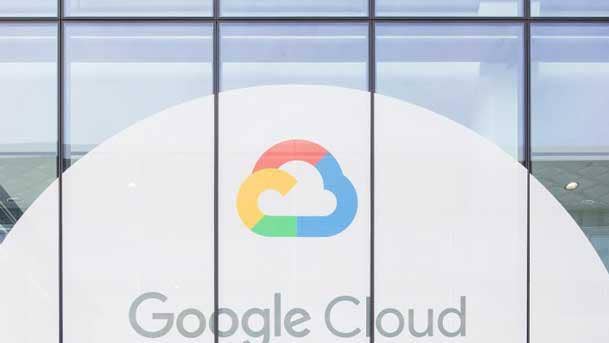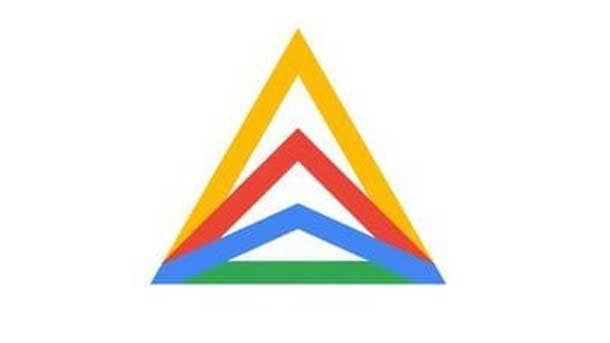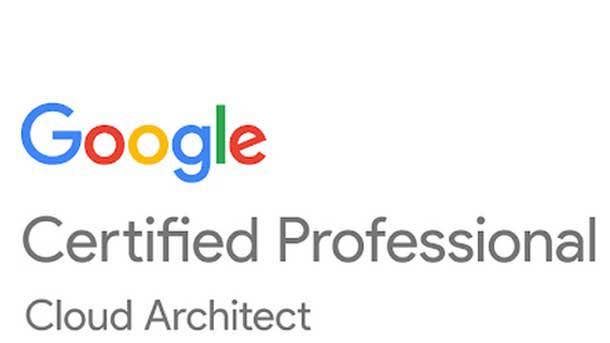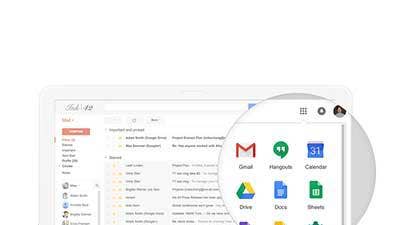Thomas Kurian’s 12 Biggest Statements On Google Cloud
“We are focused…on building a long-term business for Google and for Alphabet,” Google Cloud CEO Thomas Kurian said. “I’ve always told our team if we delight customers, if we provide them with capability they couldn’t get in any other way, and if we provide them solutions to important business problems that they have, we’ll be fine.”

It’s been about 14 months since Thomas Kurian formally took the reins as Google Cloud’s CEO in February 2019. Kurian met with CRN last month for an exclusive interview at the No. 3 cloud computing provider’s Sunnyvale, Calif., headquarters.
The former longtime Oracle executive spoke about his first year leading Google Cloud, fielding questions on its top selling points over top-ranked Amazon Web Services and Microsoft -- which include customers’ abilities to leverage the broader capabilities of Google and parent company Alphabet – and channel partners’ role in its transformation and growth plan.
“In every industry, we see customers wanting to adopt digital technology either to lower cost, grow their top-line revenues or change...how they bring products in certain markets,” Kurian told CRN. “And we at Google are using our cloud platform as a vehicle to deliver digital solutions to them. Partners are a super important part of this. We've always said that we can create value together with partners who want to build solutions on top of our platform and enable customers with solutions.”
Kurian also spoke about his first-year achievements at Google Cloud, its hybrid and multi-cloud Anthos platform, and Google Cloud’s acquisition strategy, 5G opportunities and commitment to G Suite.
What follows is an edited version of the interview.

Have you achieved everything in your first-year plan?
Yes. We were very clear of what we needed to do. We said we needed to improve in four areas. One is mature our products. And if you look at product maturity as measured by Gartner and Forrester Research combined, we're a leader in 18 to 20 'Magic Quadrants' (and ‘Waves’), and that's the same number as the other hyper-scalers. If you went back to 2017, we earned far fewer leaders quadrants compared to the others, and it's reflective of the maturation of our product portfolio.
(That work included finishing) our features, (making) sure we have all the compliance requirements met. Recently, for example, we were awarded the certification FedRAMP High. It allows us to broaden our support in the government customer base. We also added support for lots of more traditional enterprise workloads -- SAP, VMware, Oracle, Windows, mainframes. These are all things that enterprise customers want, and we didn't support them before 2019. That lets us serve customers better, because we have a prepackaged solution for them. It also opens up new markets for us.
Step two was scaling our direct sales organization. We've been extremely focused on making sure that we can serve customers with the right technical people, as well as salespeople, and we've significantly expanded. We've talked publicly that we would triple our sales organization over a period of years. This last year, we made good progress towards that goal, and we've been able to attract a world-class leadership team to drive our sales organization. I think you've seen a number of the announcements of people: Robert Enslin, Chris Ciauri, Kirsten Kliphouse, Janet Kennedy, Tomoyuki Hirate in Japan, and so on. We've built out great sales leadership from companies with enterprise backgrounds, so they bring a lot of expertise in how to guide and grow and manage large-scale sales organizations. The other thing we've done is we've tiered our customer base: small and medium business, corporate or commercial accounts, enterprise and we've introduced select accounts, which are named accounts. Typically, they have a one-to-one relationship with somebody called a key account director, in addition to a salesperson. These are the largest customers that we have and our customers that we're investing in order to help them build more solutions on our platform, and also customers that have made a big commitment to our cloud. You've seen a number of customers over the years that we've talked about publicly: Hongkong and Shanghai Bank, Target…Spotify…Carrefour. We've organized them by industry, so it allows us to sell industry solutions much more effectively to customers. So, we made a lot of progress this last year on the direct side.
On the channel side, we've expanded the number of people that support channel partners. We've introduced, for example, a channel support function where our channel organization actually provides customer support in new ways to partners. We've introduced commercial incentives for them. We expanded the number of territories that channels can sell to. We've reduced and eliminated channel conflict between direct and the partners as we've scaled.
And then, lastly, to make sure customers are running super mission-critical stuff. A big part of their decision-making is going to be the quality of the customer service, customer success function. So we've introduced a number of new functions. We built out a customer success function. We've built out a technical account management function to provide on-site customer service for large customers. We've introduced a new enterprise support offering. And, recently, even for specialized workloads like SAP, we've introduced enterprise customer service for SAP -- 15-minute response time if you're running SAP.

What are your top selling points for why customers should choose Google Cloud over Amazon Web Services and Microsoft?
One certainly is that customers get access to the broad set of innovations that Google as an organization or Alphabet as an organization gives them. If you’re in health care, it’s what we do with our cloud, Google Health and Verily (Life Sciences). If it’s in retail, (it’s) search and ads and our shopping offerings, as well as the Google Assistant, along with what we do in cloud.
Kohl’s works with us on a number of different projects to help modernize their IT infrastructure. They’ve built a … chat bot that can answer questions for customers. But one of the areas that we’ve worked across Google is using our analytics foundation and our marketing and advertising tools to help them be much more targeted in how they use our technology to reach customers with offers, with promotions, with new products. That’s a common thing we do with retailers. That’s a combination of our expertise in the cloud around data science, large-scale data and analytics, coupled with the reach that we have on the consumer side with our search and ads.
A separate example is … the work we’re doing with Activision Blizzard. That’s a partnership we did with them to bring games in new ways to people around the world. They use our cloud platform, and they’re very keen on both the platform’s capabilities because of the high-performance compute environments that we run [and] the capabilities of our network and the streaming that we provide. They’re also doing work—and it’s a partnership across Google with them, from Android to YouTube—to deliver new ways of exciting their players with an integrated experience across their Android phones, the information that creators are able to put up on YouTube and the interactivity they would get by delivering games on our platform.
Secondly, on the core platforms … there are differences in what we do. We are the only one really offering these unique industry solutions. Inventory management is a complicated issue, and we’re helping a number of retailers optimize how they manage inventory and lower cost associated with the inventory. We offer a number of solutions to retailers—personalization, recommendation, product discovery, inventory management. In health care, we provide solutions to normalize and get a unified view of patient information across a variety of systems. In media, we offer things around media streaming. We had an announcement with Quibi … and we offer new ways to deliver short-form videos. And we’re doing a number of things in financial services around fraud, anti-money-laundering, etc. So we have a set of solutions in the cloud which are not just about IT, but applying IT to important business problems.
The third thing is, on our infrastructure side, we have a platform that we built for multi-cloud. [Anthos] allows organizations … to write an application once, they can deploy it in their data center, they can go across Amazon, Google and other cloud providers.

Can you talk about the adoption of Anthos?
(Anthos) is getting very strong interest from customers and, frankly, from partners. If you're a partner, one of the values of Anthos is you can train your people on one technology. And if you go into a customer, and they say our chosen cloud platform is x, you can have the same set of people work on no matter what the customer picks as their platform, because it runs everywhere. That's a big value proposition to partners.
We're seeing (customer) adoption in a number of industries. KeyBank -- it's a large financial institution in the Midwest – (uses) Anthos to optimize their test and development and delivery processes, and they are using it across an on-premise environment and our cloud. Kohl's, as an example, is a customer… using it across multiple clouds -- Google and other public clouds.
We're seeing very good momentum with it. And we are seeing a lot of customer interest on ensuring that they can build applications and decouple where they're building the application and where it can run. People like it because it's the choice that it gives it gives them. Secondly, it allows them to have one pool of talent in their organization. The biggest issue we see with customers today is skill set and the lack of skills on cloud. They don't have to fragment their existing skill set, because you can train your people on one technology and have it work everywhere. Anthos also provides you the ability to manage consistently: You can manage security, you can manage operationally across cloud.

Can Google Cloud ride its open-source, hybrid and multi-cloud strategy and data and artificial intelligence (AI) strength past No. 2 Microsoft any time soon?
We are focused, first of all, on building a long-term business for Google and for Alphabet. I’ve always told our team if we delight customers, if we provide them with capability they couldn’t get in any other way, and if we provide them solutions to important business problems that they have, we’ll be fine. We don’t spend our day waking up in the morning worrying about who’s first, second or third—partly because it’s important that we focus on the customer, not on competition, and much more importantly, because it’s also apples to oranges what people are counting in their cloud revenue numbers. So we don’t lose a lot of sleep over keeping score.

Google Cloud has announced plans for tripling its sales force. Would you like to see your partner ecosystem triple, too?
When we started this transformation of our cloud organization, we were very clear with partners that we believe that they and us, together, are important for clients. We have certain expertise -- that's on building products, innovating with software and delivering business solutions. Partners complement us by extending our platform and delivering value to clients. We are very focused on making sure in each country, in each industry and in each market segment, we have the right partners.
A partner who helps a small and medium business adopt our collaboration tool G Suite…is going to be very different than a partner who helps us implement machine learning for a financial institution and a top-tier bank. We have over 5 million small and medium enterprise (customers), and their needs are very different than what a big system integrator does. The large system integrators, of course, are super important partners to us, but they're focused on delivering solutions to a certain segment of customers. We look at the market as customer segment, the needs that they have and the geography or industry they're in, and make sure we have the right combination of people to support their needs.

Can you give an example of how you're extending the partner initiative this year?
We are seeing a lot of customers who used to run systems on an outsourced basis. In the traditional world, many big corporations said, 'I don't want to run IT myself, I'm going to outsource IT.' And as they move to cloud, they want organizations to provide what's called managed services, but using cloud as a delivery vehicle for managed services, not a legacy environment. So we've done a lot of work and we are very active with a number of partners who are very specialized, who provide what we call managed services on top of our platform. That's one example of a place where we are seeing growth and we're investing in to further our footprint with partners.
Not only did we build that program, but we've also put in place specific support in our partner organization. If you're a managed services organization, our partner team will help you with trouble ticketing, triaging issues, resolving problems, etc., and that is very different from what some of the other cloud providers do.
Second example is public sector. Working with federal agencies, working with state and local governments, there are requirements for our partners to have things like classified clearances. As we have significantly expanded our business with public sector, we have specialized partners who work with those agencies. We're expanding our footprint with them, both in the United States and in overseas locations. We are growing very quickly. We've added a lot of people to cover state and local governments, as well as federal governments, and we have the necessary compliance certifications to service both.
We've started seeing (public sector) customers work with us on large-scale basis. We provide capability to the New York City Cyber Command. We have a public win with the U.S. Postal Service, where we're helping transform its business model and the technology infrastructure behind it to become more of a digital organization. We've done work with different states -- Arizona, Tennessee -- enabling them to use our platforms and our collaboration tools, for example, to change how effectively they can collaborate amongst themselves and also deliver services to citizens.
Third, we are seeing partners bring specific skills in some areas, and we are investing with them around specific solutions. Recently with Accenture, we announced the partnership around…INTIENT. INTIENT is their life sciences platform. It's used by lots of biotech and pharmaceutical companies, and we've optimized that solution on Google Cloud. We have a joint program with them going to life sciences institutions.

What percentage of overall Google Cloud revenue is driven by partners?
We don't break that out publicly, but…even as we expand the direct business, our partner business is growing very quickly with us. One of the things that we've done very well with partners is train them on the solutions that we're talking to customers about and that customers are finding interesting with us, and several of them have grown with us.
We recently announced a partnership with SADA Systems where they're investing significantly and expanding the capability to deliver solutions with us. This is a partner that's existed for a long time with Google but seeing the huge growth and demand for our solutions, and we've created a number of solutions with them for corporate customers. We've also announced…new partnerships with HCL (Technlogies). That's partly because of demand in enterprise customers, not just in digital natives. We see partners like Accenture (and) Deloitte hugely expanding their capability because of demand we're seeing from customers. And we've been very careful to make sure that we enable the partner ecosystem with training, with certification, with support, with commercial incentives to make sure that we can approach customers together.
Has Google Cloud improved compensation to partners since you've come on board?
We have changed the partner program, and we've put a lot more economic incentives directly into the hands of partners, both with regard to bringing us new customers or winning new logos, as well as expanding our existing presence by delivering solutions into existing customers.
Can you quantify it in any way?
We have not disclosed that publicly, so I don't want to quantify it, because we're very careful to follow our practices on what we're communicating financially. But net-net, the partners have been very happy with our program.

Where should Google Cloud partners be investing their resources?
We are seeing very strong growth in our (G Suite) collaboration offering. We’re seeing strong growth in our infrastructure. Obviously, data and analytics and machine learning are a real strength of ours. And we see huge growth in customers migrating legacy data warehouses and other things, as well as moving applications like SAP. Those are areas we constantly brief partners on, and we help them grow with us.

Where do you expect Google Cloud to be in the next two to three years, and what has to fall into place?
If you look at our focus this year, next year, it's about scaling what we started last year -- delivering even more technology innovation and products, delivering new business solutions using our AI advances, targeting solutions for specific industries. We're seeing a lot of interest in those from customers. Scaling our direct sales force, teaching our people -- because they're organized by industry -- to have deep domain understanding of the industry they're selling to, so that they can be unique in their expertise in advising clients, and then broadening our partner ecosystem. For instance, one of the things we're very focused on is broadening the number of partners who are trained and have Google Cloud Platform-certified professionals. That increased 300 percent last year, and it's an indication of demand that we see. There's a lot of things we're doing to enable the ecosystem -- training, go-to-market, supporting them with the right customer service, enabling them to deliver new solutions -- and I think partners hear our message loud and clear. We are a product and software innovation company. We need partners, and we value partners for the expertise and the skills they bring to complement and extend our platform.

As part of your growth plan, do you anticipate any more acquisitions?
We are very happy that the [$2.6 billion] Looker acquisition just completed. We’ve been thoughtful on how we do acquisitions. We’ve always acquired complementary products. Looker, for example, has had many common customers with our analytics portfolio. We’ve shown that we don’t need acquisitions to grow. We can grow organically, and we’re growing very quickly organically. But where it makes sense, we’ve done acquisitions to complement our existing portfolio products.

What is your commitment to G Suite?
It’s a big part of our focus on growth and our abilities of customers, and we have a whole range of them. Airbus, Whirlpool, Colgate—these are large customers using G Suite. We have a huge, huge business in education. We have a very, very large population of children and teachers using our products, and we have a long tail of small and medium businesses who use G Suite. In retail, we have customers who have many people who are in the front line of retail— meaning people who work in the stores—and they don’t want to be standing behind a desktop computer. They want to apply a collaboration tool that lets them just work from their mobile phone.
Right now, we have a huge number of people using G Suite to run meetings, because travel is difficult because of the ongoing concerns around the (corona)virus. So we’ve done a lot of things with live streaming, integrating new things, helping people collaborate to create things together and simplifying the collaboration experience, not just (for people) who traditionally used collaboration tools, but many new people—nurses, airline pilots, retail store workers, construction workers. All of them we’re trying to bring into the collaboration experience.

What do you see as Google Cloud’s opportunities with 5G?
With telecommunications providers, we’re doing three or four different things. With 5G, we see an opportunity to make the telecommunications network not just about latency and bandwidth, but as a platform to deliver applications. Rather than just on your device or in a data center, (applications) can actually run inside the telecommunications network. The telecommunications network can then monetize revenue, not based on connectivity, but based on new applications and solutions they’re offering.
Example number two, we are working with a number of large telecommunications software providers to change the core parts of the network—allowing people to run network functions in our cloud, allowing them to run their operational support systems and their business support systems, like their billing systems, in the cloud.
We are also working with telecommunications companies to optimize the customer experience. We have a technology (Contact Center AI) to help significantly improve the experience consumers have with contact centers by applying our voice and our artificial intelligence technologies to assist agents. We have a lot of interest from telecommunications companies in that.
And then, lastly, we also have people who are modernizing their IT, not just within the core parts of the IT infrastructure, but also … in the retail point of sale.
(Two days after this interview, Google Cloud unveiled its global mobile edge cloud strategy for 5G and an AT&T collaboration to help enterprises take advantage of its technologies using AT&T network connectivity at the edge.)